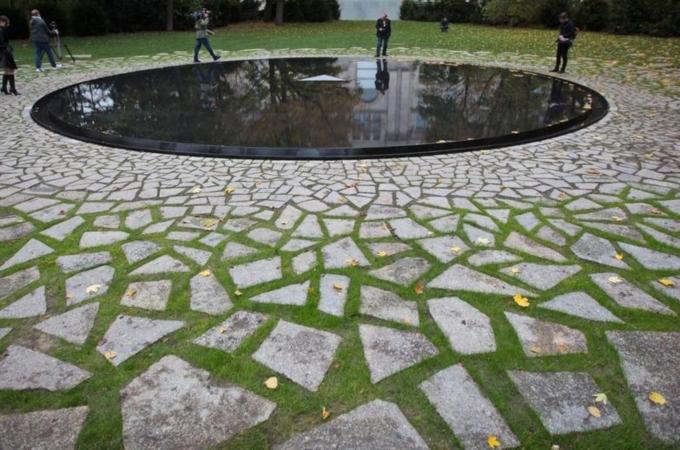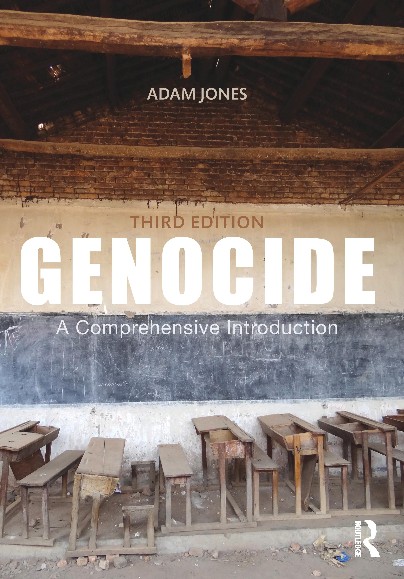US and EU Push for Progress in Troubled Balkans
By Andrew Quinn
Reuters.com, October 30, 2012
"Europe and the United States teamed up on Tuesday to press Bosnia, Serbia and Kosovo to overcome the legacy of Yugoslavia's bloody collapse as a condition of closer integration with the West. 'If you do not make progress you will be left behind,' US Secretary of State Hillary Clinton warned at the start of a trip to the region with EU foreign policy chief Catherine Ashton. NATO member Croatia will follow Slovenia in joining the 27-nation EU next year, but accession is a very distant prospect for the other five countries carved from federal Yugoslavia in the 1990s. In Bosnia, where 100,000 people died in a 1992-95 war, Clinton urged rival Serb, Muslim and Croat leaders to overcome ethnic infighting that has stalled reforms sought by the EU and NATO, 'for the sake of the young people of this country'. In Serbia, Clinton and Ashton called on the government to mend relations with Kosovo, the former Serbian province where ethnic Albanians declared independence in 2008 with the backing of the United States and major European powers. 'This is good for Serbia and it is good for Kosovo,' said Ashton, who is leading a push for agreement in EU-mediated talks. Serbia rejects the secession, and some Serb leaders still hold out hope of retaining a small northern region of Kosovo populated by Serbs and controlled from Belgrade.
Tuesday, October 30, 2012
Rwanda / Genocide Legislation
 |
| "Ms. Ingabire was also accused of financially helping a banned Hutu rebel group, the FDLR." (Stephanie Aglietti/AFP) |
By Mike Pflanz
The Telegraph, October 30, 2012
"Rwanda's leading Hutu opposition leader, Victoire Ingabire, was Tuesday jailed for eight years for treason and 'denying genocide' after a lengthy court case that her lawyers said was politically motivated. Ms. Ingabire has boycotted the trial since April and was not in court to hear Mrs. Justice Alice Rulisa hand down the sentence. She was also convicted of 'belittling' the genocide. Her British lawyer, Iain Edwards, said that he intended to appeal the verdict. Ms. Ingabire returned to Rwanda in 2010 after 17 years in exile in Holland, and said she intended to run against Paul Kagame, the incumbent president, in elections that year. Security forces arrested her after she questioned why memorials to the 800,000 people who died in 100 days of killing in 1994 failed to include Hutu victims of the slaughter. Most of those who died were from the Tutsi tribe, but many Hutus who sheltered Tutsis or were seen as moderates opposed to the ethnic cleansing were also killed. Prosecutors said that this amounted to denying the genocide, a serious crime in Rwanda.
Monday, October 29, 2012
Russia / Stalinism / Genocide and Memory
Russians Gather against Totalitarianism
By Kathy Lally
The Washington Post, October 29, 2012
"The muddy slush numbed the feet. Voices trembled, not because of the freezing cold but because of the weight of their words. Russians gathered Monday in the shadow of the building where Stalin's secret police drew up their death lists, and they spoke the names of the murdered. This year, the reading had more than the usual resonance. Opponents of President Vladimir Putin have been saying that his crackdown on political opposition reminds them of those two years, the worst of Stalin's terror, when 1.7 million Russians were arrested and at least 725,000 of them were shot. Others were sent to the gulag. 'No,' said Vladimir Kantovsky, an 89-year-old survivor of the camps, after he had read four names of the dead and placed a candle next to the stone. 'It cannot be compared. You cannot even imagine what it was like.' He pointed across the square to the Lubyanka, the home of the Federal Security Service, successor to the KGB. 'There were guards there with knives,' he said. 'People wouldn’t even walk near the building, they were so terrified.' Even so, Kantovsky said, it was more important than ever to read the names. 'We must make people remember,' he said. 'We can't let them forget. If they do, it can happen again.'
By Kathy Lally
The Washington Post, October 29, 2012
"The muddy slush numbed the feet. Voices trembled, not because of the freezing cold but because of the weight of their words. Russians gathered Monday in the shadow of the building where Stalin's secret police drew up their death lists, and they spoke the names of the murdered. This year, the reading had more than the usual resonance. Opponents of President Vladimir Putin have been saying that his crackdown on political opposition reminds them of those two years, the worst of Stalin's terror, when 1.7 million Russians were arrested and at least 725,000 of them were shot. Others were sent to the gulag. 'No,' said Vladimir Kantovsky, an 89-year-old survivor of the camps, after he had read four names of the dead and placed a candle next to the stone. 'It cannot be compared. You cannot even imagine what it was like.' He pointed across the square to the Lubyanka, the home of the Federal Security Service, successor to the KGB. 'There were guards there with knives,' he said. 'People wouldn’t even walk near the building, they were so terrified.' Even so, Kantovsky said, it was more important than ever to read the names. 'We must make people remember,' he said. 'We can't let them forget. If they do, it can happen again.'
Sunday, October 28, 2012
Myanmar / Burma
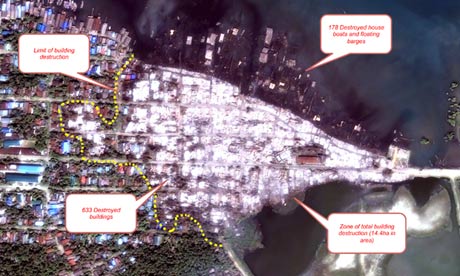 |
| "Thousands of Rohingya Muslims are believed to have fled Kyaukpyu, on Burma’s west coast, after their homes were destroyed in the latest clashes with Buddhists." (Human Rights Watch) |
By Peter Beaumont
The Observer, October 27, 2012
"Burma's president, Thein Sein, has admitted his country's Rohingya Muslim population has been subjected to an unprecedented wave of ethnic violence. Whole villages and large sections of towns have been destroyed. Thein Sein's admission follows release of shocking satellite images showing the scale of the destruction in one coastal town, where most -- if not all -- of the Muslim population appears to have been displaced and their homes wrecked. The pictures, acquired by Human Rights Watch, show destruction to the town of Kyaukpyu on the country's west coast. They reveal 14.4 hectares (35 acres) of destruction, in which some 811 buildings and houseboats have been destroyed. The images confirm reports of massive violence in the town over 24 hours around 24 October, three days after the first wave of attacks. The incidents in Arakan province -- also known as Rakhine -- have displaced thousands of people in what appears to have been a wave of ethnic cleansing pitting Arakan Buddhists against Muslims. 'There have been incidents of whole villages and parts of the towns being burned down,' Thein Sein's spokesman said. A government official initially put the death toll at 112 but later revised it to 67. Thein Sein's comments follow a warning from the office of UN general secretary Ban Ki-moon that ethnic violence was endangering political progress in Burma. The latest violence in Burma comes as the government is struggling to contain ethnic and religious tensions suppressed during nearly a half century of military rule that ended last year. Inter-ethnic violence broke out earlier this year, triggered by the rape and murder of a Buddhist woman by three Muslim men. Human Rights Watch said it had identified 633 buildings and 178 houseboats and floating barges destroyed, in an area occupied predominantly by Rohingyas.
Friday, October 26, 2012
Myanmar / Burma
Myanmar Gov't Pleads for End to Ethnic Strife
Associated Press dispatch in The New York Times, October 26, 2012
"Myanmar's government has appealed for peace in the western state of Rakhine, warning that ethnic violence there that has taken at least 56 lives in recent days risks harming the country's reputation as it seeks to install democratic rule. The mob violence pitting the Buddhist Rakhine community against the Muslim Rohingya has seen entire villages torched and has drawn international calls for government intervention. 'The army, police, and authorities in cooperation with local people will try to restore peace and stability and will take legal action against any individual or organization that is trying to instigate the unrest,' said a statement from the office of President Thein Sein published Friday in the state-run Myanma Ahlin newspaper. Since Sunday, 25 men and 31 women have been reported dead and 60 men and four women injured in the violence in four Rakhine townships, state government spokesman Win Myaing said Thursday. He did not break down the casualties by ethnic group. The government said 1,948 houses and 8 religious buildings had been destroyed through Wednesday. 'As the international community is closely watching Myanmar's democratic transition, such unrest could tarnish the image of the country,' the presidential statement said. In June, ethnic violence in the state left at least 90 people dead and destroyed more than 3,000 homes. About 75,000 have been living in refugee camps ever since. Curfews in place in some areas since then have been expanded due to the latest violence, but tensions have stayed high in part because the government has failed to find any long-term solution other than segregating the communities. The long-brewing conflict is rooted in a dispute over the Muslim residents' origin. Although many Rohingya have lived in Myanmar for generations, they are widely denigrated as intruders who came from neighboring Bangladesh to steal scarce land.
Associated Press dispatch in The New York Times, October 26, 2012
"Myanmar's government has appealed for peace in the western state of Rakhine, warning that ethnic violence there that has taken at least 56 lives in recent days risks harming the country's reputation as it seeks to install democratic rule. The mob violence pitting the Buddhist Rakhine community against the Muslim Rohingya has seen entire villages torched and has drawn international calls for government intervention. 'The army, police, and authorities in cooperation with local people will try to restore peace and stability and will take legal action against any individual or organization that is trying to instigate the unrest,' said a statement from the office of President Thein Sein published Friday in the state-run Myanma Ahlin newspaper. Since Sunday, 25 men and 31 women have been reported dead and 60 men and four women injured in the violence in four Rakhine townships, state government spokesman Win Myaing said Thursday. He did not break down the casualties by ethnic group. The government said 1,948 houses and 8 religious buildings had been destroyed through Wednesday. 'As the international community is closely watching Myanmar's democratic transition, such unrest could tarnish the image of the country,' the presidential statement said. In June, ethnic violence in the state left at least 90 people dead and destroyed more than 3,000 homes. About 75,000 have been living in refugee camps ever since. Curfews in place in some areas since then have been expanded due to the latest violence, but tensions have stayed high in part because the government has failed to find any long-term solution other than segregating the communities. The long-brewing conflict is rooted in a dispute over the Muslim residents' origin. Although many Rohingya have lived in Myanmar for generations, they are widely denigrated as intruders who came from neighboring Bangladesh to steal scarce land.
Wednesday, October 24, 2012
Namibia / Germany / Restitution for Genocide
 |
| "At a German military graveyard in Namibia's Waterberg national park, only a small plaque commemorates the Herero people." (Erin Conway-Smith/The Globe and Mail) |
By Geoffrey York
The Globe and Mail, October 21, 2012
"The tattered ribbon from a German wreath hangs inside a nearly empty museum in the bleak capital of the Herero people. 'Forgive us our trespasses,' say the fading words. It's as close to an apology as the Herero have ever received from the German government. But today their militant leaders want more than just a vague expression of regret for the death camps and extermination orders. They want their land back -- and they’re threatening to use violence to take it. In the bush and scrub of central Namibia, the descendants of the surviving Herero live in squalid shacks and tiny plots of land. Next door, the descendants of German settlers still own vast properties of 20,000 hectares or more. It’s a contrast that infuriates many Herero, fuelling a new radicalism here. Every year the Herero hold solemn ceremonies to remember the first genocide of history's bloodiest century, when German troops drove them into the desert to die, annihilating 80 per cent of their population through starvation, thirst, and slave labour in concentration camps. The Nama, a smaller ethnic group, lost half of their population from the same persecution. New research suggests that the German racial genocide in Namibia from 1904 to 1908 was a significant influence on the Nazis in the Second World War. Many of the key elements of Nazi ideology -- from racial science and eugenics to the theory of Lebensraum (creating 'living space' through colonization) -- were promoted by German military veterans and scientists who had begun their careers in South-West Africa, now Namibia, during the genocide. The parallels between the Nazi era and the German tactics in Africa are documented by David Olusoga and Casper Erichsen in their recent book, The Kaiser's Holocaust. They list some examples: 'concentration camps, the bureaucratization of killing, meticulous record-keeping of death tolls and death rates, the use of work as a means of extermination, civilians transported in cattle trucks then worked to death, their remains experimented upon by race scientists, and the identification of ethnic groups who had a future as slaves and those who had no future of any sort.'
Germany / Roma and Sinti / Nazi Holocaust
Germany Unveils Roma Holocaust Memorial
Agency reports on AlJazeera.com, October 24, 2012
"German Chancellor Angela Merkel has opened a memorial in Berlin to the Roma victims of the Nazi Holocaust. Up to 500,000 Roma Gypsies were murdered by the Nazis during during World War II. Wednesday's unveiling comes after years of delays and disputes over the memorial's design and its cost. The long-delayed monument, consisting of a round pool of water and stele on which a single fresh flower will rest each day, sits opposite the Reichstag parliament building in central Berlin. Merkel stressed the crucial importance of living up to the crimes of history and providing a site to educate, to mourn the victims and to warn coming generations. 'Every generation must confront its own history afresh. That is why we must have appropriate places where that is possible where people can also go in the future when the survivors are no longer alive.' She was joined at the opening ceremony by German President Joachim Gauck and about 100 elderly survivors, as well as the leader of the Central Council of Sinti and Roma in Germany, Romani Rose, who heads a community of about 70,000. They observed a two-minute silence around the pool as the triangular plinth was raised from below the surface with a flower on it. The monument was designed by Israeli artist Dani Karavan and is located near two other memorials for victims of the Nazi years, a sprawling field of pillars for the six million murdered Jews and a smaller monument for gay victims.
Agency reports on AlJazeera.com, October 24, 2012
"German Chancellor Angela Merkel has opened a memorial in Berlin to the Roma victims of the Nazi Holocaust. Up to 500,000 Roma Gypsies were murdered by the Nazis during during World War II. Wednesday's unveiling comes after years of delays and disputes over the memorial's design and its cost. The long-delayed monument, consisting of a round pool of water and stele on which a single fresh flower will rest each day, sits opposite the Reichstag parliament building in central Berlin. Merkel stressed the crucial importance of living up to the crimes of history and providing a site to educate, to mourn the victims and to warn coming generations. 'Every generation must confront its own history afresh. That is why we must have appropriate places where that is possible where people can also go in the future when the survivors are no longer alive.' She was joined at the opening ceremony by German President Joachim Gauck and about 100 elderly survivors, as well as the leader of the Central Council of Sinti and Roma in Germany, Romani Rose, who heads a community of about 70,000. They observed a two-minute silence around the pool as the triangular plinth was raised from below the surface with a flower on it. The monument was designed by Israeli artist Dani Karavan and is located near two other memorials for victims of the Nazi years, a sprawling field of pillars for the six million murdered Jews and a smaller monument for gay victims.
Israel / Palestine / Apartheid
 |
| "Palestinians warn that the growing Jewish settler population in the West Bank means that the creation of a Palestinian state is looking increasingly unviable." (Dan Balilty/AP) |
By Adrian Blomfield
The Telegraph, October 23, 2012
"A majority of Israeli Jews favour introducing discriminatory policies against the country's Arab population and would support an 'apartheid' system in the West Bank if it were ever annexed, an opinion poll has shown. With three months to go before a general election, a survey reported in the Haaretz newspaper shows further evidence of a sharp tilt towards nationalism in Israeli society. More than two-thirds of those questioned by Dialog, an opinion pollster, said they would oppose suffrage for the 2.5 million Palestinians living in the West Bank were it to be annexed to Israel. Nearly three-quarters -- 74 per cent -- say they also support a system of segregated roads for Palestinians and Israelis in the West Bank, although the majority say they would view such a policy as 'necessary' rather than 'good'. Although favoured by some nationalist Jews, the prospect of Israel annexing the West Bank, which it has occupied since the Six-Day War of 1967, remains a distant one. But with little progress being made in resurrecting the Middle East peace process, the possibility of annexation is viewed by some as increasingly likely. Palestinians, as well as some liberal Israelis, warn that the growing Jewish settler population in the West Bank means that the creation of a Palestinian state -- the cornerstone of a 'two-state solution' -- is looking increasingly unviable. The survey found that a majority of the Jewish public -- 59 per cent -- say they want a system that gives preference to Jews applying for civil service jobs. Arabs, who constitute 20 per cent of the Israeli population, complain such a policy unofficially exists already.
Sunday, October 21, 2012
Germany / Turkey / Armenian Genocide
 |
| "German and Turkish officers pose with the skulls of Armenian victims." |
By Robert Fisk
The Independent, October 21, 2012
"The photograph -- never published before -- was apparently taken in the summer of 1915. Human skulls are scattered over the earth. They are all that remain of a handful of Armenians slaughtered by the Ottoman Turks during the First World War. Behind the skulls, posing for the camera, are three Turkish officers in tall, soft hats and a man, on the far right, who is dressed in Kurdish clothes. But the two other men are Germans, both dressed in the military flat caps, belts and tunics of the Kaiserreichsheer, the Imperial German Army. It is an atrocity snapshot -- just like those pictures the Nazis took of their soldiers posing before Jewish Holocaust victims a quarter of a century later. Did the Germans participate in the mass killing of Christian Armenians in 1915? This is not the first photograph of its kind; yet hitherto the Germans have been largely absolved of crimes against humanity during the first holocaust of the 20th century. German diplomats in Turkish provinces during the First World War recorded the forced deportations and mass killing of a million and a half Armenian civilians with both horror and denunciation of the Ottoman Turks, calling the Turkish militia-killers 'scum'. German parliamentarians condemned the slaughter in the Reichstag. Indeed, a German army medical officer, Armin Wegner, risked his life to take harrowing photographs of dying and dead Armenians during the genocide. In 1933, Wegner pleaded with Hitler on behalf of German Jews, asking what would become of Germany if he continued his persecution. He was arrested and tortured by the Gestapo and is today recognised at the Yad Vashem Jewish Holocaust memorial in Israel; some of his ashes are buried at the Armenian Genocide Museum in the capital, Yerevan. It is this same Armenian institution and its energetic director, Hayk Demoyan, which discovered this latest photograph.
DR Congo / Rape and Sexual Violence
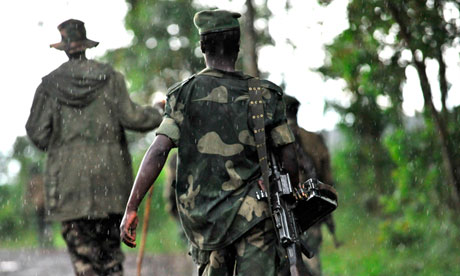 |
| "M23 is not the only group blamed for the rise in rape numbers. Heal Africa says the 745 child victims it recorded in first half of 2012 marks a significant shift." (Junior D. Kannah/AFP/Getty Images |
By David Smith
The Guardian, October 19, 2012
"The number of women and children raped in the Democratic Republic of the Congo has risen dramatically because of a surge in rebel militia activity, according to a local health organisation report. Heal Africa, which runs a hospital for rape victims in the eastern city of Goma, said it had registered 2,517 cases in the first half of this year. The total comprised 2,339 females -- 105 of whom became pregnant -- and 178 males. The number of perpetrators was 2,134. There has been a sharp increase in sexual violence in recent months, Heal Africa added, although figures since June are not yet available. A six-month uprising by the rebel group M23, led by war crimes suspect Bosco 'the Terminator' Ntaganda, has caused fresh turmoil in eastern Congo and displaced hundreds of thousands of people. A UN report claims the rebellion is being supported by neighbouring Rwanda. Emmanuel Baabo, leader of Heal Africa's project dealing with sexual violence, said: 'The numbers are rising because several armed groups -- not only the M23 -- have increased their activities over several months. In times of fighting you usually see also rape, refugees, stealing, killing and the burning of houses going up. 'The staff of Heal Africa are frustrated to see all this. We are working for a change in Congo and now it is getting worse. And of course you are always thinking: "What has happened to this girl can happen tomorrow to my sister, daughter or wife."'
Iran
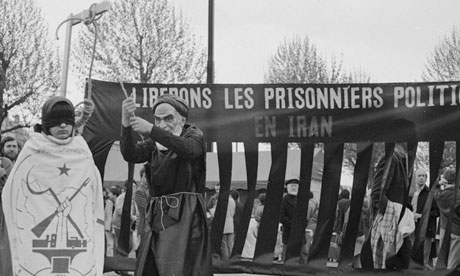 |
| "Iranian exiles stage a mock hanging by Ayatollah Khomeini in Place de la Bastille, Paris, on 1 May 1982 in a protest at executions of prisoners." (Roger Viollet Collection/Getty Images) |
By Owen Bowcott
The Guardian, October 18, 2012
"As political liquidations go, it is a massacre that ranks alongside some of the worst excesses of the 20th century: at least 20,000 Iranians executed in prison in the 1980s. Yet it received scant international attention. Unlike the carnage of Srebrenica or the purges of General Pinochet's coup in Chile, there was little worldwide outrage, and no opportunity for justice and legal redress. But this month the killings, perpetrated by then-Ayatollah Khomeini's regime, will be examined by an independent tribunal in The Hague in a process that exposes the shortcomings of the international justice system. The hearing, aimed at uncovering the truth of what occurred in Iran's jails, highlights the selective nature of what goes before the UN's courts and special tribunals. Founded in 2007 because no official judicial body would investigate complaints against Iran, it is a cross between a people's truth commission and a formal legal indictment. It is based on the model developed by a private international war crimes tribunal established in 1966 by Bertrand Russell and Jean-Paul Sartre to investigate the US war record in Vietnam. The focus of the Iran tribunal is the mass executions carried out inside the country's jails from 1981-89 of political prisoners, men and women. About 4,500 people, many teenagers and from leftwing groups, died in summer 1988 alone, according to Amnesty International. Iranian exiles claim 20,000-30,000 prisoners died in total -- victims of a fatwa issued by Ruhollah Khomeini, then head of state. The extent of the killings has been largely ignored by the west.
Israel / Palestine
 |
| "Palestinians sit by the port in Gaza City, Wednesday, Oct. 17, 2012." (Adel Hana/Associated Press) |
By Associated Press
The Washington Post, October 17, 2012
"The Israeli military meticulously calculated the number of calories Gaza's residents would need to consume to avoid malnutrition during a sweeping blockade imposed on the Palestinian territory between 2007 and mid-2010, according to a document the Defense Ministry released under a court order and that was made public Wednesday. The Israeli military insisted that it never used the 2008 guidelines to restrict the flow of food to Gaza. But critics disputed that, saying the calculations appear to have guided limits imposed on food imports at the time. They said the document provides further evidence that Israel used food as a weapon to put pressure on Hamas, the violently anti-Israel militant group that seized Gaza by force in mid-2007. The blockade was imposed shortly after Hamas took over Gaza. Israel declared Gaza a 'hostile territory' in September 2007, following the takeover. Seeking to weaken the militants, it called for 'severe restrictions' on civilians that included limitations on food. Israel maintained the blockade was necessary to weaken Hamas, but critics accused the government of targeting Gaza’s more than 1.5 million people in its ultimately unsuccessful effort to achieve that goal. Hamas remains firmly in control of the territory. Israel's military spokesman Maj. Guy Inbar said the mathematical formula was devised as a safeguard to identify food needs and avoid a humanitarian crisis in Gaza. The Israeli rights group Gisha, which waged a lengthy legal to make the document public, contended that Israel calculated the calorie needs for Gaza's population in order to restrict the quantities of goods and basic products it allowed in during the three-year blockade. In the food calculation, Israel applied the average daily requirement of 2,279 calories per person, in line with World Health Organization guidelines.
Wednesday, October 17, 2012
Genocide Tribunals / Bosnia and Herzegovina / Srebrenica Massacre
Former Bosnian Leader Begins His Defense at Genocide Trial
By Marlise Simons
The New York Times, October 16, 2012
"He was once known for his virulent speeches throughout Bosnia, but on Tuesday as Radovan Karadzic began his defense in a new phase of his genocide trial, he told international judges that he was a 'mild and tolerant man' and that instead of standing accused, he should be 'rewarded for all the good things I have done.' It was Mr. Karadzic’s turn to have his say, after prosecutors had presented him as the architect of a brutal three-year war. 'Everybody who knows me knows I am not an autocrat, I am not aggressive, I am not intolerant,' Mr. Karadzic, 67, a former psychiatrist who became the Bosnian Serb wartime leader, told the court. 'On the contrary, I am a mild man, a tolerant man with great capacity to understand others.' He said he wrote children's poetry, did not hate Bosnian Muslims -- he added that he had a Muslim barber -- and did 'everything in his power to reduce the war.' From the public gallery at the United Nations war crimes tribunal in The Hague, there were noisy cries of 'He's lying!' Other angry survivors of the war gathered outside. Among the close to 70 trials held at the tribunal, Mr. Karadzic's case involves perhaps its most famous chameleon. Indicted on charges of war crimes, he went into hiding in 1996, emerging 13 years later in the guise of a new-age healer, bearded and longhaired. These days, Mr. Karadzic spends long hours in the dock in a business suit, politely conducting his own defense. The list of charges against him include some of the worst episodes of violence in Europe since World War II.
By Marlise Simons
The New York Times, October 16, 2012
"He was once known for his virulent speeches throughout Bosnia, but on Tuesday as Radovan Karadzic began his defense in a new phase of his genocide trial, he told international judges that he was a 'mild and tolerant man' and that instead of standing accused, he should be 'rewarded for all the good things I have done.' It was Mr. Karadzic’s turn to have his say, after prosecutors had presented him as the architect of a brutal three-year war. 'Everybody who knows me knows I am not an autocrat, I am not aggressive, I am not intolerant,' Mr. Karadzic, 67, a former psychiatrist who became the Bosnian Serb wartime leader, told the court. 'On the contrary, I am a mild man, a tolerant man with great capacity to understand others.' He said he wrote children's poetry, did not hate Bosnian Muslims -- he added that he had a Muslim barber -- and did 'everything in his power to reduce the war.' From the public gallery at the United Nations war crimes tribunal in The Hague, there were noisy cries of 'He's lying!' Other angry survivors of the war gathered outside. Among the close to 70 trials held at the tribunal, Mr. Karadzic's case involves perhaps its most famous chameleon. Indicted on charges of war crimes, he went into hiding in 1996, emerging 13 years later in the guise of a new-age healer, bearded and longhaired. These days, Mr. Karadzic spends long hours in the dock in a business suit, politely conducting his own defense. The list of charges against him include some of the worst episodes of violence in Europe since World War II.
Rwanda / Uganda / DR Congo
 |
| "The M23 rebels launched a mutiny against the government early this year after breaking away from the army." (Agence France-Presse) |
AlJazeera.com, October 17, 2012
"Rwanda's defence minister is commanding a rebellion in eastern Democratic Republic of Congo that is being armed by Rwanda and Uganda, both of which sent troops to aid the insurgency in a deadly attack on UN peacekeepers, according to a UN report. The UN Security Council's Group of Experts said in a confidential report that Rwanda and Uganda -- despite their strong denials -- continued to support M23 rebels in their six-month fight against Congolese government troops in North Kivu province. 'Both Rwanda and Uganda have been supporting M23,' said the 44-page report, which was seen by the Reuters news agency on Tuesday. 'Rwandan officials exercise overall command and strategic planning for M23,' the report said. 'Rwanda continues to violate the arms embargo through direct military support to M23 rebels, facilitation of recruitment, encouragement and facilitation of FARDC [Congolese army] desertions as well as the provision of arms and ammunition, intelligence, and political advice. While Rwandan officials coordinated the creation of the rebel movement as well as its major military operations, Uganda's more subtle support to M23 allowed the rebel group's political branch to operate from within Kampala and boost its external relations,' it said. Bosco Ntaganda, a former Congolese general wanted by the International Criminal Court for alleged war crimes, controls the rebellion on the ground and M23 leader Sultani Makenga is in charge of operations and co-ordination with allied armed groups, the UN report said. Both Ntaganda and Makenga 'receive direct military orders from RDF [Rwandan army] Chief of Defence staff General Charles Kayonga, who in turn acts on instructions from Minister of Defence General James Kabarebe,' it said.
Libya
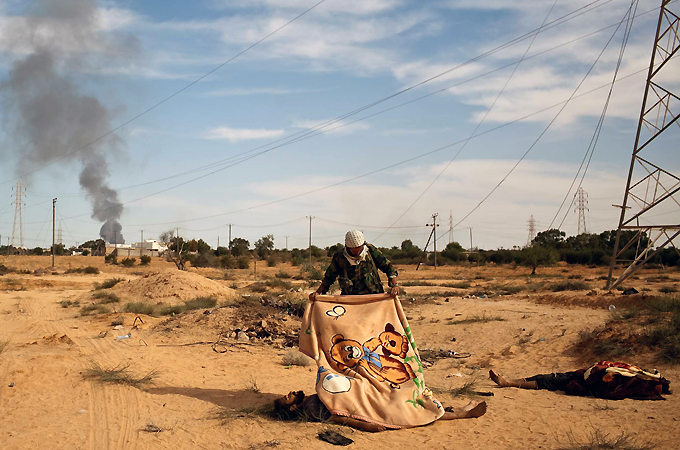 |
| "HRW accuses Misrata-based militias of capturing, brutalising and killing members of Gaddafi's convoy." (EPA) |
AlJazeera.com, October 17, 2012
"New evidence implicates Libyan militias in an apparent execution of dozens of detainees in rebel custody following the capture and death of Muammar Gaddafi last year, a watchdog has said. In a report released on Wednesday detailing Gaddafi's final hours on October 20, 2011, Human Rights Watch said it had gathered evidence that Misrata-based militias captured and disarmed members of the dictator's convoy and subjected them to brutal beatings. 'The evidence suggests that opposition militias summarily executed at least 66 captured members of Gaddafi's convoy in Sirte,' his home town, Peter Bouckaert, emergencies director at Human Rights Watch (HRW), said on Wednesday. 'It also looks as if they took Mutassim Gaddafi, who had been wounded, to [the port city of] Misrata and killed him there,' he said of Gaddafi's son. 'Our findings call into question the assertion by Libyan authorities that Muammar Gaddafi was killed in crossfire, and not after his capture,' Bouckaert said of a Human Rights Watch report documenting the executions. The 50-page report, 'Death of a Dictator: Bloody Vengeance in Sirte,' also details the final hours of Gaddafi's life and the circumstances under which he was killed on the basis of witness testimony and mobile phone footage. HRW said its evidence suggested that Misrata-based militias captured and disarmed members of Gaddafi's convoy and, after bringing them under control, subjected them to brutal beatings. 'They then executed at least 66 captured members of the convoy at the nearby Mahari Hotel,' said the report, adding that some still had their hands bound behind their backs.
Tuesday, October 09, 2012
Nazism / Jewish Holocaust
 |
| Shlomo Venezia (Victor Sokolowicz/Bloomberg) |
By Dennis Hevesi
The New York Times, October 6, 2012
"Shlomo Venezia was one of the first Jews to climb out of the freight car when it came to the end of the line at the Auschwitz-Birkenau concentration camp in Poland on April 11, 1944, his mother crammed behind him. Two blows from a German guard's baton struck him in the back of the neck. 'When I turned around to try to find my mother, she wasn't there anymore,' he recalled. 'I never saw her again, she wasn't there, and neither were my two little sisters, Marica and Marta.' Mr. Venezia, an Italian Jew who died at 88 on Oct. 1 in Rome, would enter what Primo Levi, the writer and fellow Auschwitz survivor, called 'the gray zone,' where terrorized victims survived on the fringe of collaboration. A sturdy 20-year-old, he was ordered into the Sonderkommando, a unit of prisoners forced to direct thousands of other victims of the Nazis into the gas chambers and to bear their bodies into the crematories. For nearly 50 years he remained haunted and virtually silent about his role in the horror. 'Not because I didn’t want to talk,' he said, 'but because people didn't want to listen, didn't want to believe it.' That changed in the early 1990s, when right-wing extremism reared again in Italy and, Mr. Venezia said, 'swastikas began to appear on walls.' He began to speak at conferences, to reporters, to schoolchildren -- and most notably to Beatrice Prasquier, a journalist with whom, in 2007, he published 'Inside the Gas Chambers: Eight Months in the Sonderkommando at Auschwitz.' The book offers a harrowingly matter-of-fact account in which he describes loading corpses into the ovens 12 hours a day, seven days a week. Originally published in French as an oral history in the form of an interview with Ms. Prasquier, 'Inside the Gas Chambers' has since been translated into nearly two dozen languages. ...
Subscribe to:
Posts (Atom)

